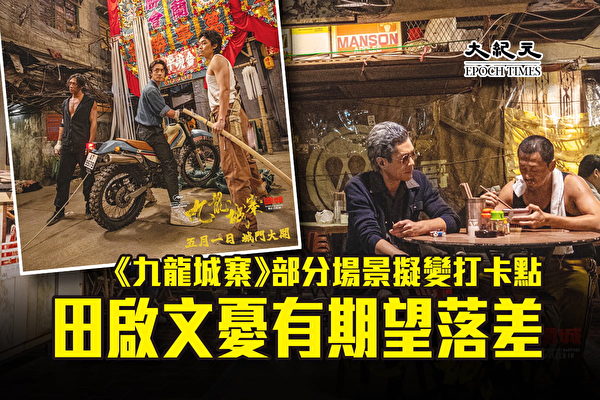The film “Encirclement of Kowloon Walled City” has seen a rise in box office numbers, stirring up a citywide discussion about local heritage. The Hong Kong government has stated that they will explore retaining and resetting certain scenes as popular “check-in spots.”
A spokesperson from the Hong Kong Film Workers Association, Tan Kai-wen, mentioned on a local TV program on the 23rd that resetting certain scenes is a positive move. However, due to the fact that film shoots do not construct entire cityscapes, managing audience expectations beforehand is crucial.
Tan explained that as film sets are constructed in a piecemeal fashion, even with preserved shooting locations, the complete historical ambiance of Kowloon Walled City cannot be fully reconstructed. He also pointed out the need to balance convenience and visual aesthetics during filming, while noting that visitor experiences involve safety considerations.
He further remarked that retaining and resetting certain scenes is beneficial, but the presentation format must be carefully considered due to discrepancies between the movie and actual shooting locations. Another aspect to ponder is deciding which elements from the film can be authentically reproduced. For instance, whether to choose the haircutting salon of Louis Koo or the fight scene between Aaron Kwok and Louis Koo in a temple requires thoughtful deliberation.
Moreover, post the hype surrounding the film, long-term planning is necessary for the handling of the sets. Tan emphasized the importance of proactive measures from the government to avoid potential oversaturation and the need for timely action.
Additionally, he highlighted the challenges of organizing exhibitions, particularly regarding venue constraints. Outdoor setups, for instance, must factor in weather conditions to prevent sun exposure or rain damage. When asked about leveraging films to boost local tourism, Tan candidly stated that it’s not solely reliant on private initiatives but hinges on the government’s recognition of the value of film and cultural industries. Selectivity in promoting films is crucial, as there are numerous film productions, and evaluating which to endorse is essential.
In the same program, Li Chao-yu, a South Kowloon District Councilor, expressed his support for resetting certain scenes. He proposed carving out a corner in Kowloon Walled City Park for this purpose, or installing interpretive panels in the park to recreate the historical ambiance. Some scenes could even be integrated into the area’s redevelopment plans, or workshops could be organized within the district to teach tourists about local traditions like making fish balls, promoting indigenous culture.

